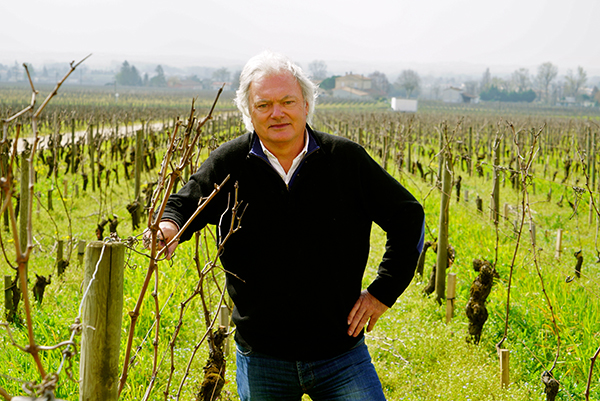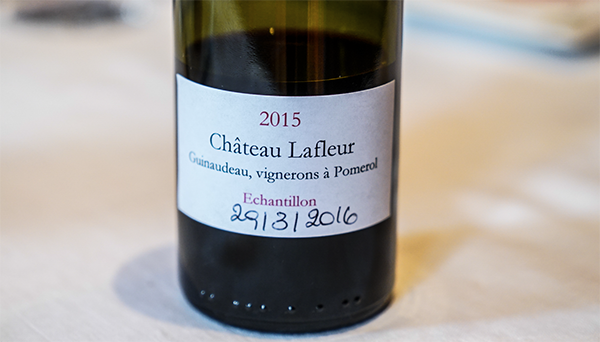More & More Thoughts on En Primeur Bordeaux: Merlot Magic in 2015

(This was first published on March 24, 2015. It was updated on April 4, 2015)
The 2015 vintage for Bordeaux is a unique year. It produced wines with a combination of power and precision, particularly from the Right Bank appellations such as Pomerol and St. Emilion as well as all the others such as Lussac-St.-Emilion and Lalande-de-Pomerol. Pessac-Léognan also made compelling wines (La Mission Haut-Brion) is a possible perfect wine. In addition, the Margaux appellation made some of its best wines ever.
It definitely is a merlot vintage, where the grape produced the most profound wines with fantastic concentration and richness as well as tannin tension and freshness. Tasting many of the wines is like biting into a freshly picked bunch of grapes with the sweet fruit and tannic skins, not to mention the crunchy and nutty ripe seeds. That’s as pure as it gets with tasting en primeur 2015.

“This is the greatest vintage of my career,” explains Stéphane Derenoncourt, the famous consulting enologist who also makes his own wine Domaine de l’A in Castillon Côtes de Bordeaux. He made in 2015 his best wine ever there, like many small producers on the Right Bank.

What is so exciting about this vintage is that so many outstanding wines have been made in lesser appellations. This is going to represent an exciting buying opportunity for consumers looking for something different, whether it’s a pure merlot from Puisseguin-St.-Emilion or a cabernet from Fronsac. I hope the wine trade gets behind these lesser-known appellations and wineries. So many of them sell ex-cellar for 5 Euros to 15 Euros a bottle and they will be amazing values this year. The problem is that many of the members of the wine trade are lazy, and they don’t promote or sell these wines. Instead, they trade the big names like commodities – whatever is easy.

“There’s such diversity this year,” says Hubert de Bouärd, owner of the top growth of St. Emilion’s Château Angélus but also a consulting enologist for dozens of other wines mostly on the Right Bank. “The 2015s have such beautiful purity and freshness as well as great structure.”
The dry whites are equally persuasive, especially from Pessac-Léognan. They have lots of ripe fruit and density, yet they have a liveliness that gives them an energy and form. Apparently the sweet wines are amazing and I have tasted d’Yquem, Rieussec and among others.

The French press is said to have questioned the freshness in the wines of 2015, but I don’t see it. The wines look very toned and pretty at this stage of their evolution.
In total I have tasted close to 800 wines from nearly all the key appellations including first growths. It’s generally accepted that the harvest was slightly complicated in the northern Médoc in 2015 due to intense rains in the area in mid-September and part of August. This caused a slight dilution in the wines. But most of the Right Bank and Pessac-Léognan had very little, if any, rain. I noted this in my first article about 2015 posted on the site earlier this week.

The 2015 could be viewed like 1998, when most of the Right Bank harvested before rains and produced memorable wines while Médoc made very-good-but-not-great wines because of moisture before and during the harvest. I think it is less clear if this is a “split vintage” in 2015, particularly considering some top wines I tasted in the Médoc, but, so far, the Right Bank, Pessac-Léognan and Margaux have made the most exciting wines in 2015. It’s a better siutation than the 1998 vintage overall.
Check out the tasting notes of the 750 wines I tasted in the past few weeks. There are eight perfect bottles as well as numerous wines with extremely high ratings. It’s exciting to find these wines after four years of only good-to-very-good vintages in Bordeaux. You must be a subscriber to read the notes.

Photos from top to bottom: Tasting a range of 2015 merlots; 2015 Bordeaux samples; Château Pavie St.-Emilion 2015; Hubert de Bouärd, owner of Château Angélus; Château Lafleur Pomerol 2015; Château Petrus Pomerol 2015 and Château Canon St.-Emilion 2015